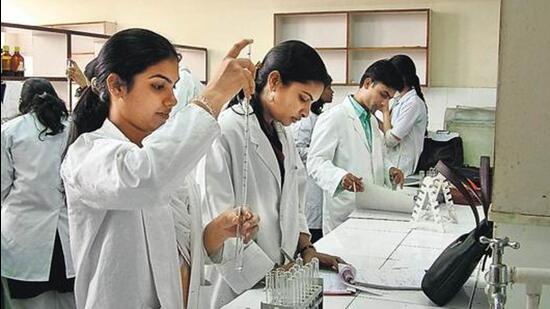NAAC removes over 1,000 assessors after panel’s recommendations
Even before the bribery incident, NAAC had removed around 800 out of its 6,100 assessors, bringing the number down to 5,364, due to data discrepancies, protocol violations
New Delhi: The National Assessment and Accreditation Council (NAAC) has removed over one-fifth of its 5,300 assessors following the recommendations of a 10-member special committee, said Anil Sahasrabudhe, the chairperson of the NAAC executive committee, on Tuesday. This action comes after a case of corruption involving the arrest of seven NAAC peer team members by the Central Bureau of Investigation (CBI) in February.

Even before the bribery incident, the NAAC had removed around 800 out of its 6,100 assessors, bringing the number down to 5,364, due to data discrepancies, feedback issues, and protocol violations.
The CBI had arrested three office-bearers of the Guntur-based Koneru Lakshmaiah Education Foundation (KLEF) in February, along with seven members of the NAAC peer team, in connection with a corruption case.
The case involves allegations of bribes being paid to secure an A++ rating for KLEF in Andhra Pradesh during a NAAC inspection. The federal agency has claimed that KLEF officials sought favourable accreditation by bribing members of the NAAC inspection committee.
Also Read: 156 colleges to be fined ₹10,000 for dodging NAAC accreditation
Later,the NAAC debarred all seven arrested members from further visits to colleges and universities for evaluation.
“All these seven members never went to any college together, not even two of them together for inspection in the past one and a half years before the incident. The main accused had not gone of any visit for the last one and a half years. Even in cases where a single person out of the remaining six accused had gone for a visit with other team members, nothing abnormal was observed by NAAC peer team assessors,” Sahasrabudhe said.
Following the incident, the NAAC received several complaints about grading discrepancies which led to officials revisiting and re-evaluating around 400 institutions including government ones where issues such as sudden grade jumps, unusually high first-time scores, or 30% gaps between Data Validation and Verification (DVV) process and the onsite Peer Team Visit (PTV) were found, he said adding that in over half the cases, grades were subsequently lowered.
The quantitative and qualitative data provided by the institutions are validated during the DVV process and the PTV to the Institution, respectively.
Established in 1994, the NAAC evaluates the quality of education and infrastructure in universities and colleges using a grading system based on a cumulative grade point average (CGPA) from 1.51 to 4.00 and grades them for five years on a scale from A++ to C, while a D signifies no accreditation. CGPA is based on factors like teaching, research, innovation, and infrastructure. A high NAAC score gives institutions greater autonomy, course flexibility, online program approvals, and stronger credibility.
The NAAC peer team committees, composed of academic experts from various universities, conduct physical assessments of institutes and send the assessment report to the NAAC within two days of their visit to the institutes.
Also Read: NAAC general council chief M Jagadesh Kumar promises action over rating bribery
“We removed 1,233 assessors out of 5,364 assessors from our database after the February incident based on the recommendations of a 10-member special NAAC committee consisting of academicians and experts of different fields and regions. They recommended the removal based on discrepancies in colleges assessed by them or feedback from their colleagues, etc. We had earlier removed around 800 assessors before the incident. We now have 4,131 assessors, and 100 new assessors are being added,” he added.
Sahasrabudhe said the NAAC is gearing up to put in place new accreditation system.
“The framework for ‘Binary or Basic Accreditation’ is ready, and the framework for ‘Maturity Based Graded Levels (MBGL)’ is in an advanced stage and will be completed within a month. We will launch them together. We are aiming for accreditation of 100% of colleges in the next five years,” he said.
Under the binary accreditation system, institutions meeting minimum benchmarks across 50+ parameters will be marked as accredited, and others as not accredited. The MGBL framework will then rate accredited institutions from Level 1 to 5 based on progress and performance over the years.






